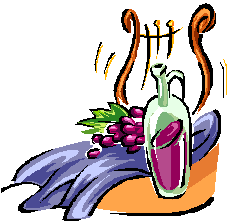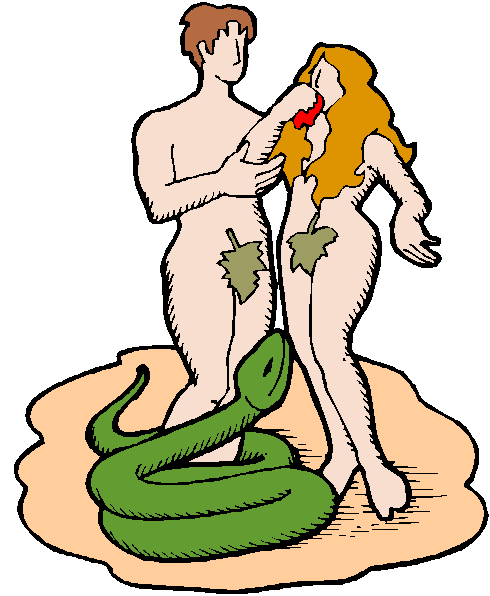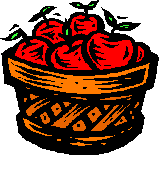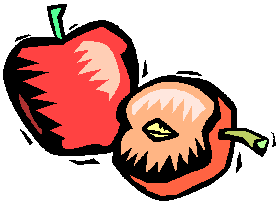![]()
Greek Mythology
Festivals of Dionysus
The time around the Autumn Equinox was celebrated by the Greek people in many ways. In ancient Athens, Oschophoria was the name of the grape harvest festival. It was held in what would be modern day late September. This festival was sacred to Dionysus, the Greek God of Wine. Men would carry grape heavy vines throughout the town in a procession, followed by drinking, singing and general merriment.
Dionysus was the one who showed the people how to cultivate the grapes in order to make wine, and Priestesses of Dionysus would mix some of this sacred drink with water and serve it to the community in a large goblet called the "kantharoi".
![]()
 The
Eleusinian Mysteries
The
Eleusinian Mysteries
This was also the time of the perhaps more well known celebration of the Eleusinian mysteries. This celebration was held in the city of Eleusis, a city in Attica, north of Athens. The mysteries honored the great Goddess of Grain, Demeter, and her daughter, Persephone.
The festival is held here, because it is commonly believed that during Her search for Persephone, Demeter was welcomed by the King and Queen of Eleusis. Demeter nursed the sons of the King, and even tried to make one of them immortal by holding him over the sacred fire. She was interrupted by the Queen, and in fury, revealed Herself to the Queen and bid her to build a temple in Her honor in the city.
The temple was built, and in late Autumn, the Mysteries began. It is said that this is when Persephone returns to the realm of Her husband, Hades. Demeter begins to grieve once again for the loss of Her daughter.
![]()
 Celtic/
Welsh Mythology
Celtic/
Welsh Mythology
The story of Mabon ap Modron, the Welsh God, (the "great son of the great mother"), is celebrated. The Equinox is the birth of Mabon, from his mother Modron, the Guardian of the Otherworld, the Healer, the Protector, the Earth. Mabon was taken when he was a mere three nights old. Through the wisdom of the Oldest Living animals - the Blackbird of Cilgwri, the Stag of Rhedynfre, the Owl of Cwm Cawlwyd, the Eagle of Gwernabwy and the Salmon of Lyn Llyw -- Mabon is freed from his mysterious captivity.
Also, the Equinox is the day of the year when the god of light, Lleu Llaw Gyffes is defeated by His rival, Gronw Pebr. The night conquers day. The tales state that the Equinox is the only day which Lleu is vulnerable and the possibility of his defeat exists. Lleu stands on the balance (Autumn Equinox - Libra) with one foot on the goat (Winter Solstice - Capricorn) and the other on the cauldron (Summer Solstice - Cancer). He is betrayed by his wife, Blodeuwedd, the Virgin (Virgo) and transformed into an Eagle (Scorpio).
Lleu's defeat represents not only the sun's dying power, but also the cycle of rebirth, his energy remaining within the grains we have since harvested. An incarnate of the grain spirit was thought to specifically reside within the last stalk, which is thought to be traditionally dressed in fine clothes and decorations, or possibly woven into a man-shaped form. This symbolic decoration was then harvested and carried from the field to be burned with rejoicing for the spirits release and the sun's upcoming rebirth.
![]()
Great Britain
The time of the Autumn Equinox is also the time of the Feast of Michaelmas. This was a day to honor the Archangel Michael, who is the warrior of God, and said to be the one to expel Adam and Eve from the Garden of Eden.
This was a day of hospitality and forgiveness, and a quarterly day of settling rents and accounts with the people. Traditionally, families would dress a goose and feast on it together with family and friends. Payment of geese was also a traditional thing during this time, because it was believed that if one were to feast on something so fine as goose, it would surely ensure prosperity for the rest of the year.
![]()
American Traditions
Before immigrating to the Americas, English pilgrims were accustomed to having "thanksgiving" feasts near the end of September. So it was natural that after coming to America, the first pilgrims, glad to have survived the harsh conditions of the new land, would have hosted something of a "Harvest Thanksgiving" celebration. They invited the natives, who took pity on them and helped in what ways they could, to join with them in their celebration... there you have it... the First Thanksgiving.
It is generally accepted that Thanksgiving was originally held sometime in late September - October. It wasn't until President Lincoln came to office that he set the present day for the holiday - the last Thursday in November.
![]()
Wiccan Mythology
Day and night are equal and the God prepares to depart and begin the journey back to the strength and development within his mother's, the Goddess', womb. Both sad and joyful, the Goddess lovingly awaits her God's rebirth.
![]()
Mabon Correspondences
- Other Names: Autumn Equinox, Harvest Home, Second Harvest, Alban Elfed, Witches' Thanksgiving, and Cornucopia.
- Colors: Brown, Orange, Violet, Maroon,
Russet, and Deep Gold
- Symbols: Grapes, Wine, Vines, Garland,
Gourds, Burial Cairns, Rattles, Horn of Plenty, Indian Corn and Sun
Wheels.
- Ritual Meaning: Celebrating the Second
Harvest, Balance, Honoring Aging Deities, Darkness Overtaking the Light
and the Celebration of Wine.
- Key Actions: Giving Thanks
- Ritual Oils: Apple Blossom, Hay/Straw,
Black Pepper and Patchouli.
- Stones: Yellow Topaz, Carnelian,
Sapphire, Yellow Agate, Lapis Lazuli and Amethyst.
- Plants: Vines, Ivy, Hazel, Cedar, Hops
and Tobacco.
- Activities: Wine Making and Adorning
Graves.
- Taboos: Passing Burial Sites and not
Honoring the Dead
- Animals: Dogs, Wolves, Birds of Prey
(Especially the Owl and Eagle), Blackbirds, Salmon, Stags and Goats.
- Mythical Creatures: Andaman, Cyclops,
Gnomes, Gulon, Minotaur, and the Sphinx.
- Deities: All Wine Deities (especially
Dionysus and Bacchus), Persephone, Modron, Morgan, Snake Woman, Epona,
Pamona, Muses, Demeter, Ceres, Thor, Mabon, Thoth, Hermes, Harvest
Deities and Aging Deities.
- Foods: Grapes, Acorns, Wheat Bread,
Indian Corn, Cornbread, Corn, Root Crops (Onions, Carrots, Potatoes,
etc.) Nuts, Dried Fruits, Apples, Beans, and Squash.
- Drinks: Wine, Ale, and Cider
![]()
Maenads (Wild Women)
Women
especially were drawn to following Dionysian celebrations and the deeper
mysteries beyond the wild rites. There was a lot of the uninhibited
riotousness of a modern day rock concert-and more- to these exuberant and
ecstatic gatherings.
According to some ancient writers it was possible for a woman for whom the
pressures of life had simply gotten too great, to take off for a week,
month, or more and join with the maenads, the "wild women," who did indeed
run completely wild and totally free in the forest, enjoying riotous,
ecstatic dancing, singing, and drinking in the mountain wilderness.
Encountering them was terminally unfortunate for the unlucky wanderer, the
curious rogue, or the wild animal that trespassed on their domains! They
were viewed as sacred madwomen, and by both religious law and popular
sentiment; no harm was ever to come to them, on pain of death. Offerings of
food and drink were left by the devout in places, where the maenads would
find them. There was a risk to performing this duty to Dionysus, however,
for anyone caught by the wild women could quite possibly meet a violent end.
After a woman had "been wild" for long enough and felt that all the stresses
of house and family responsibilities had been worked out of her system, she
could apparently return home to resume her life as before, no questions
asked, dignity intact.
Will we ever have a return of the maenads, the Bacchae, the wild women? With
some modifications for this very different era it might still be a very
interesting idea, and a way for getting life's hard pressures out of the
soul and spirit. Perhaps some day.
![]()
Bacchus/Dionysus
During the
time of Greece his worship was centered in Thrace and Phrygia (though it
spread far and wide), and a thousand or more years previously he seems to
have come from ancient Crete. In the eras before Rome he was called
Dionysus, the young and virile god of vegetation, wine, and ecstasy. His cult was wild and dangerous: the unwary risked death and dismemberment
in trespassing on the rites or attempting to spy on the worshippers.
In the Bible, it is also a serpent who offers Eve the
Forbidden Fruit from the Tree of Knowledge of Good and Evil. It is said that
the Serpent offered Eve an Apple, who then tasted and offered it to Adam.
When they ate the fruit, they lost their innocence and were thus cast from
Paradise.
According to Norse mythology, the Goddess Idun cared
for the Golden Apples of Immortality and Eternal Youth. Some fairy tales feature apples in them...
particularly the story of Snow White and the Seven Dwarves. Many pagans also believe that the afterlife or the
time between incarnations is spent in Avalon, also called the Apple Isle. It
is also said that after King Arthur's death, his body was taken to Avalon by
three Queens (Morgain, Genevieve and Morgause) to rest until the time when
Britain has most need of him.
During the time of Rome, he was known as Bacchus, the god of wine. Bacchus
was the protector of those who imbibed a little, a lot, or simply were
totally drunk! He gave a release from stress and a relaxation from hard
work, and he was present when businessmen, politicians, soldiers, friends,
and lovers would come together.
But there was a much darker and wilder side to Bacchus/Dionysus in centuries
before. He was recognized as a god who was both riotous and oddly enough who
would reveal the deepest mysteries of life to those who were willing to take
the chance.

And the deeper mysteries of life, death, and immortality? They're still here
for those who wish to seek them. But for now, celebrate the fruit of the
fall season. Raise a chalice of fine red wine, and give a salutation to
Bacchus, to Dionysus.![]()
Snake
(Serpent)
 The
stories of Dionysus' birth vary. The original legend, from the far more
ancient sea-empire of Crete, seems to be that the Goddess coupled with the
primal male-force of the serpent while she was herself in serpent form to
beget the ambitious and daring young goddess who later was called
Persephone.
The
stories of Dionysus' birth vary. The original legend, from the far more
ancient sea-empire of Crete, seems to be that the Goddess coupled with the
primal male-force of the serpent while she was herself in serpent form to
beget the ambitious and daring young goddess who later was called
Persephone.
Some people believe that Persephone was not seized and carried off by Hades
to the underworld, but quite willingly sought him out and went with him.
Hades, in addition to ruling the land of the dead, was and is still the
patron of wealth and power, and possesses the vast wisdom of life, death,
and what lies beyond.
Then the primeval serpent mated again, or perhaps it was Hades himself, but
Persephone gave birth to Dionysus. His symbol has become the snake or
serpent.
The snake is an arcane symbol of earth and water. It has its own
intelligence. Like a river winding its way above ground or far below, it
creeps silently along its path. It dwells in the earth and comes forth like
a fresh spring of water from the hillside, or a new shoot from its hole.
Above all, the serpent can penetrate the tomb, and in sloughing off its own
skin represents rebirth and immortality. It can be a dangerous creature, but
similarly there is danger in seeking the deepest of wisdom.![]()
Apples
 Apples
and Apple Trees have played an important part in world folklore and history.
Universally, the Apples represents wisdom and long-life.
Apples
and Apple Trees have played an important part in world folklore and history.
Universally, the Apples represents wisdom and long-life.
![]()